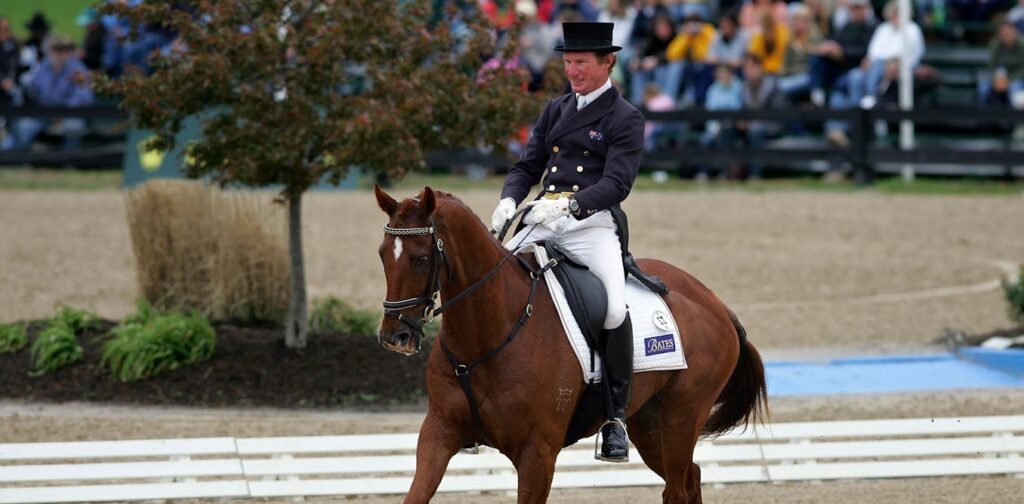
Last week, the equestrian community in Australia was rocked by the suspension of a prominent member following the release of footage allegedly showing Olympic dressage rider Heath Ryan whipping a horse over 40 times. The incident has reignited the debate over the use of whips in horse training and competition, with many calling for a complete ban.
Ryan confirmed he was the rider in the footage, which reportedly dates back two years. He explained that the horse, named Nico, belonged to a friend who had been hospitalized due to injuries inflicted by the animal. Ryan described Nico as a “problem child” and stated that the horse was on the verge of being sent to slaughter before he intervened to “salvage” it.
The Controversial Footage
The footage in question depicts Ryan mounted on Nico, forcefully whipping the horse. The sounds of the whip cutting through the air and striking Nico’s flesh are clearly audible. Despite Nico’s visible distress, the whipping continues, with the horse kicking out several times in response. The term “shut down” is often used to describe a horse in such a state, indicating a lack of understanding of how to stop the adverse experience.
According to equine experts, whipping causes significant pain to horses. The gluteal area, where Ryan repeatedly struck Nico, is particularly sensitive. This incident is not an isolated case; whipping in equestrian sports has been a contentious issue for years.
Historical Context and Precedents
In July 2024, the equestrian world was similarly shocked when footage emerged of Charlotte Dujardin, a three-time Olympic dressage gold medallist, repeatedly whipping a horse. The International Equestrian Federation fined her CHF 10,000 (approximately A$18,867) and imposed a 12-month suspension.
More recently, in May 2025, the RSPCA prosecuted a case against trainer Liandra Gray in Australia. Gray was recorded striking a horse with a padded racing whip more than 40 times. A Tasmanian court found that she had caused unreasonable and unjustifiable pain, deeming the whip use as cruelty.
“Equestrian Australia’s national dressage rules forbid excessive use of whips.”
Ethical Considerations and Consequentialism
Despite stating he “hated” whipping Nico, Ryan argued that his actions were in the horse’s best interests. After an undisclosed period, Nico was re-homed and, according to Ryan, is now thriving in a loving environment with a promising future. This raises the ethical question: does the end justify the means?
Ryan’s justification is rooted in consequentialism, a philosophy where the morality of an action is judged based on its outcomes. However, this perspective often overlooks the immediate suffering inflicted on animals, focusing instead on the perceived benefits to humans.
Critics argue that such justifications reflect a culture that prioritizes human utility over animal welfare. Horses, as sentient beings, experience pain and stress, and their needs should be respected accordingly.
Training Methods and the Need for Change
The relationship between rider and horse is frequently described as a partnership, yet in reality, horses have little choice. Riders often rely on aversive stimuli to control horses, which can be painful. Horses quickly learn to perform as desired to escape this discomfort. However, this reliance on negative reinforcement is increasingly viewed as outdated and unethical.
International organizations such as the International Society for Equitation Science (ISES) and the Federation of Veterinarians of Europe have highlighted the risks associated with aversive training methods. They argue that these methods are not only inefficient but also pose unacceptable welfare risks.
“ISES has developed a set of 10 principles for training even the most difficult horses without resorting to violence.”
While Ryan justified his actions as a last resort, scientific evidence suggests that there are more humane and effective ways to address unwanted behavior in horses. The incident with Nico is a stark reminder of the need for reform in equestrian training practices.
Implications and Future Directions
The recent incident involving Heath Ryan has intensified calls for a ban on horse whipping in equestrian sports. Advocates argue that the sport must evolve to prioritize animal welfare and adopt more ethical training methods. The equestrian community is now at a crossroads, with the potential to set a new standard for how horses are treated and trained.
As the debate continues, the focus will likely shift towards developing and implementing guidelines that ensure the humane treatment of horses. The global equestrian community must confront these ethical challenges and work towards a future where the welfare of horses is paramount.





